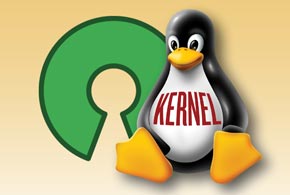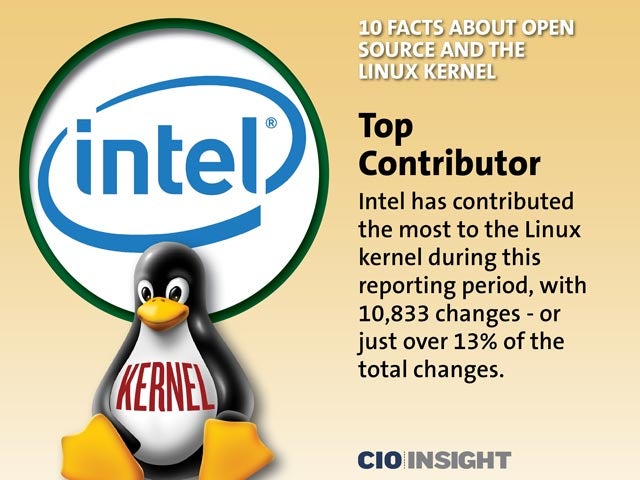
10 Facts About Open Source and the Linux Kernel
 10 Facts About Open Source and the Linux Kernel
10 Facts About Open Source and the Linux Kernel
The kernel serves as the foundation for Linux, which runs most of the public cloud. Find out how extensively the open source community supports it.
 Dominant Presence
Dominant Presence
The Linux operating system runs 90% of the public cloud workload, 62% of the embedded market share, and 99% of the supercomputer market share.
 Massive Collaboration
Massive Collaboration
Since 2005, an estimated 15,600 developers from more than 1,400 companies have contributed to the kernel.
 Change Agents
Change Agents
In its history, the kernel has seen 83,000 change sets merged from 4,319 individual developers representing 519 corporations.
 Patched Up, Part I
Patched Up, Part I
More than 12,000 patches go into each kernel release.
 Patched Up, Part II
Patched Up, Part II
Within the 406 days covered by the report, nearly 83,000 patches were implemented into the kernel.
 Accelerated Activity
Accelerated Activity
The kernel currently undergoes 8.5 patches an hour, up from 7.8 patches per hour from roughly a year ago.
 Snowball Effect
Snowball Effect
The kernel now represents nearly 25 million lines of code. It started with 10,000.
 Prolific Team
Prolific Team
The kernel community adds just over 15 files and nearly 7,500 lines of code every day.
 Top Contributor
Top Contributor
Intel has contributed the most to the Linux kernel during this reporting period, with 10,833 changes – or just over 13% of the total changes.
 Other Top Contributors
Other Top Contributors
Volunteer contributors: 6,819 changes
Red Hat: 5,965
Linaro: 4,636